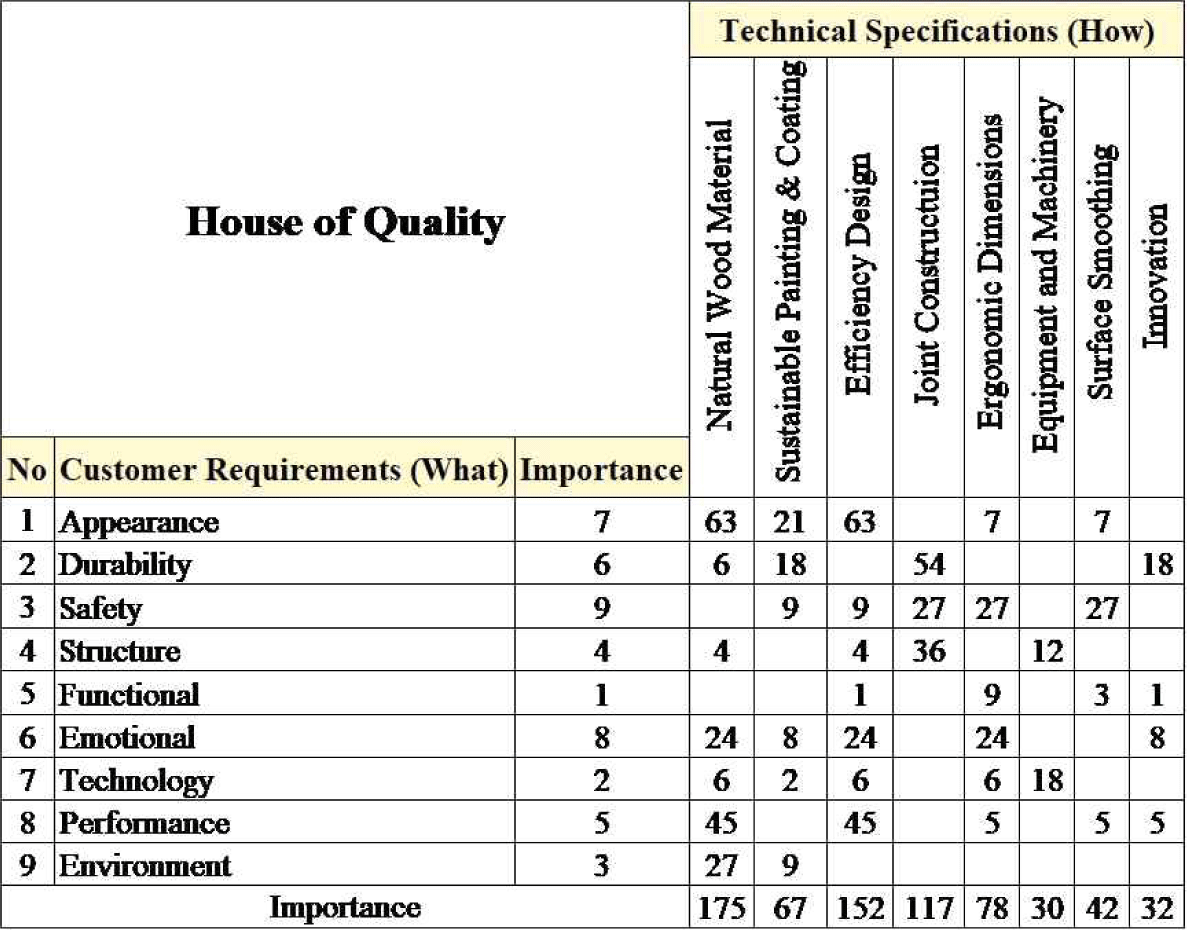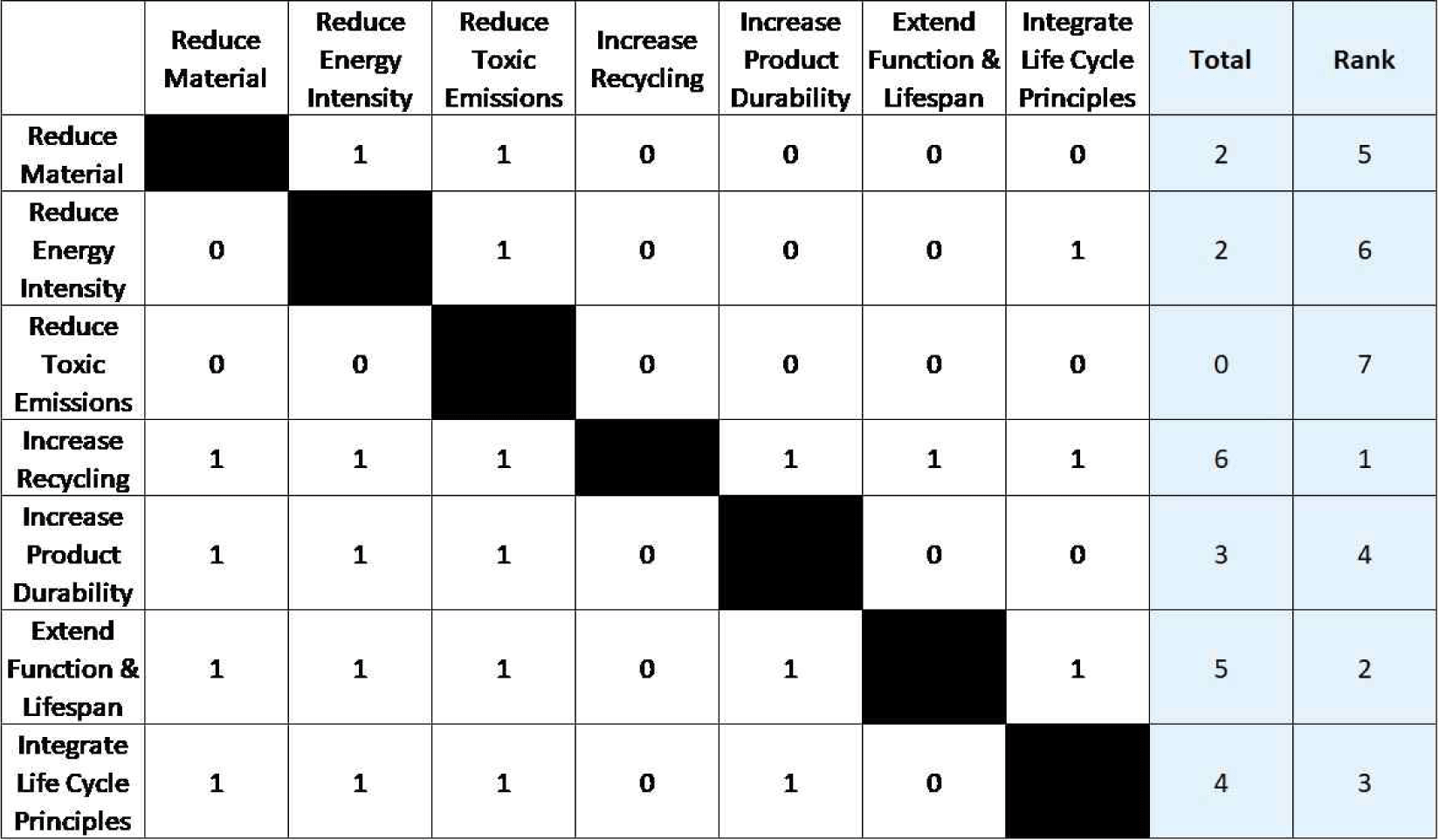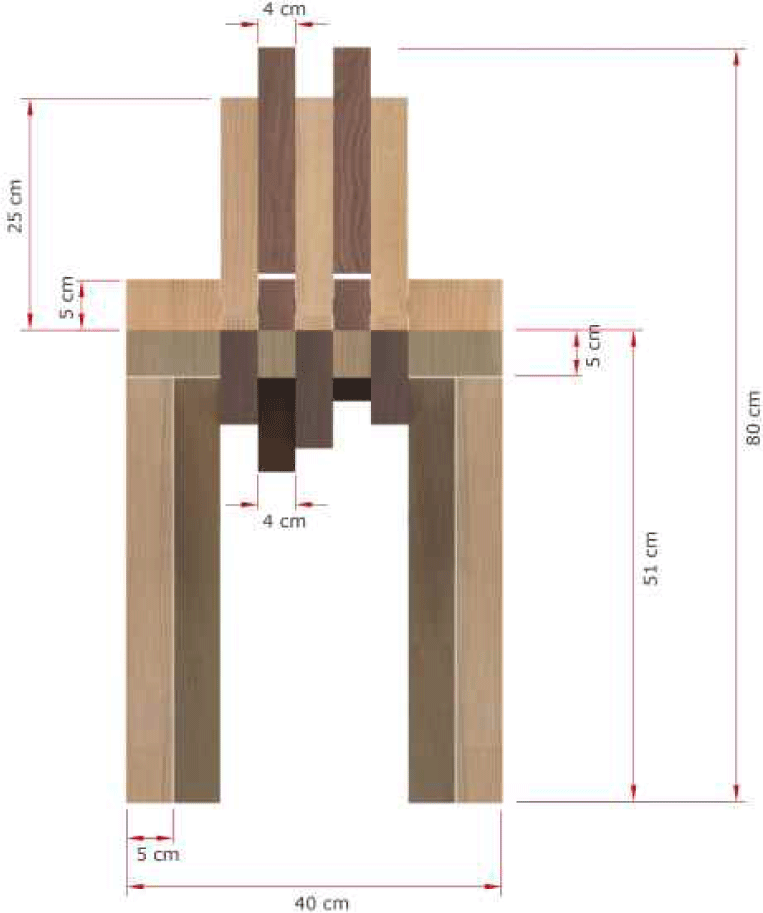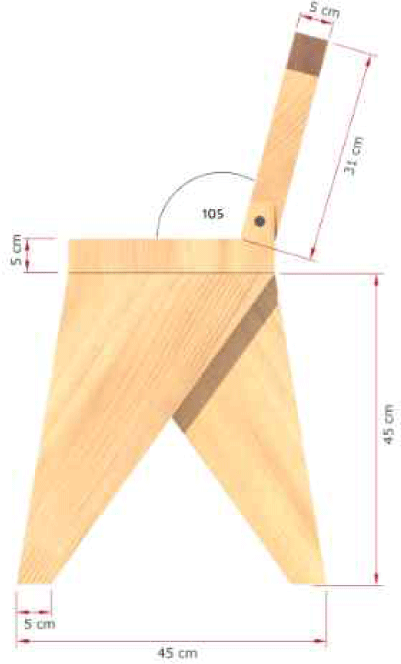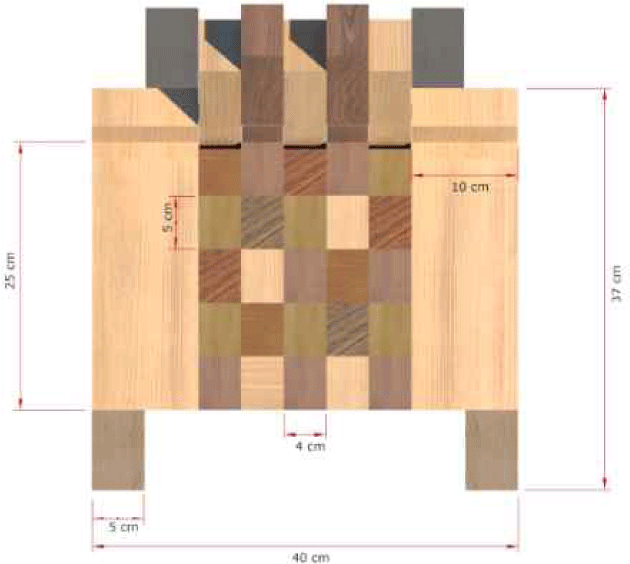1. INTRODUCTION
Industries boost economic progress but contribute to waste generation and environmental degradation (Supraptini, 2002). Sustainability challenges necessitate the adoption of eco-friendly manufacturing practices (Sugandini, 2020). The furniture industry in Indonesia grew, with an 8.04% increase in exports. Among furniture made from various materials, the wooden furniture sector has shown the fastest growth, with a growth rate of 2.87% (Kementrian Perindustrian Republik Indonesia, 2021). While furniture production in Jepara increased from 2013 to 2016, it declined in 2018 because of a shortage of raw materials that met market specifications (Kementrian Perindustrian Republik Indonesia, 2020). Conversely, industrial growth increases waste production. The wooden furniture industry in Jepara generates 57.85% of the waste (Sudiryanto and Suharto, 2020), often burned, causing pollution (Owoyemi et al., 2016). Daian and Ozarska (2009) suggested that understanding wood waste utilization benefits both production and financing. This implies that issues in the furniture industry, such as raw-material shortages, can be addressed by utilizing wood waste as a marketable product, which positively impacts the environment.
Furniture companies in Jepara produce a variety of wooden furniture such as chairs, tables, and cabinets. Jepara was chosen as the site for the case study because of its thriving furniture industry, stable export market, and high wood waste production, making it an ideal location for research on sustainable waste utilization (Setiawan et al., 2023). Wood waste is generated during production and accounts for 48% of the original material. This waste includes sawdust and shavings, bark, and small and large pieces of wood. According to the company, solid wood waste should be utilized to create high-value products, such as chairs and tables. The main products in the wooden furniture industry are tables and chairs, driven by high demand from restaurant customers and large scale production. According to the Head of Production, dining chairs can be designed using large pieces of wood waste. Unlike cabinets, wardrobes, shelves, and chairs, they require fewer large components. However, chairs will not be made entirely from waste wood but will include some components made from it. The Head of Production also emphasized the importance of designing chairs suitable for various spaces, including dining rooms, workspaces, and lounges. Therefore, it is necessary to identify the potential of each type of waste for the development of dining-chair products.
Several methods are used in product design, including value engineering, which emphasizes cost control without sacrificing quality (Hendrawan and Hartomo, 2019), quality function deployment (QFD) which ensures transparency from customer needs to design plans (Akao, 2014), theory of solving problems inventively (TRIZ) which offers creative solutions by focusing on resolving contradictions (Ekmekci and Nebati, 2019), and TRIZ eco-efficiency (TRIZEE) which adds an eco-efficiency aspect to the TRIZ concept (Sheng and Kok-Soo, 2010). The integration of QFD and TRIZ has been widely used in product design, particularly in furniture designs, such as those previously researched by Kuang et al. (2013), Sari et al. (2024a), and Xu and Xia (2023). However, integration with an eco-efficiency-based approach has not yet been implemented. Therefore, this study aims to develop a product design derived from wood waste by integrating QFD to translate customer needs and TRIZEE to resolve contradictions based on eco-efficiency.
Based on previous research, it has been noted that Li et al. (2023) explored furniture product design using waste, but the method applied did not provide a strong correlation with the waste itself. Sari et al. (2024b) successfully integrated QFD and TRIZ for wood-based products, that is, modular-based multifunctional gallon pumps made from wood waste. Although the integration of QFD and TRIZ has been widely applied, integration using an eco-efficiency-based approach is yet to be explored. TRIZEE is an extension of the TRIZ approach that combines TRIZ concepts with eco-efficiency principles, as popularized by Sheng and Kok-Soo (2010). Using TRIZEE, designs can be made more environmentally friendly through material usage optimization, waste reduction, and increased material recycling (Sari et al., 2024a). Therefore, integrating QFD with TRIZEE represents a new potential.
2. MATERIALS and METHODS
Fig. 1 illustrates the research flow for utilizing wood waste in furniture production. This step integrates the QFD and TRIZEE methods and uses the furniture industry in Indonesia as a case study.
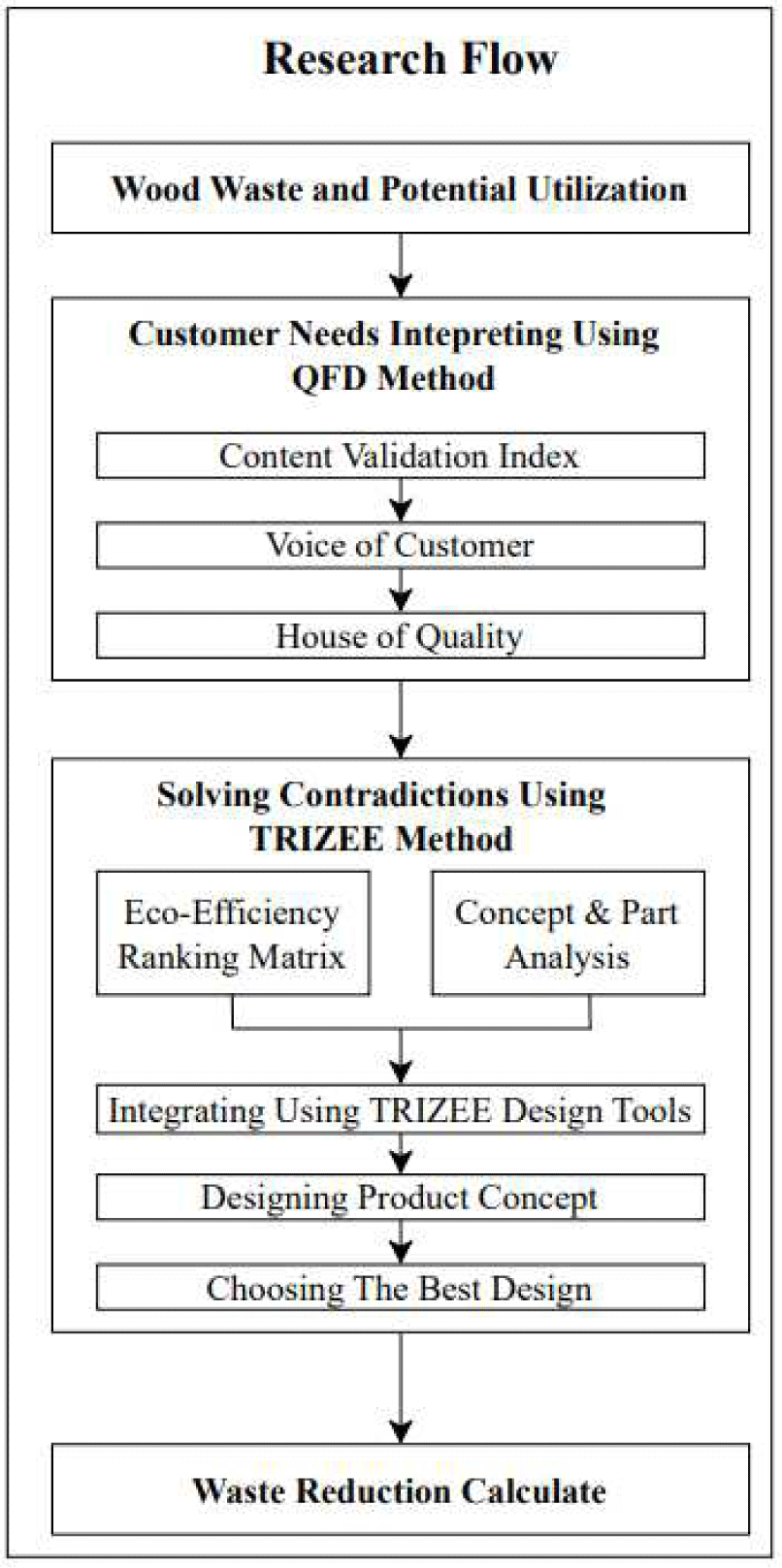
This study begins by identifying the potential uses of various wood waste types, followed by a customer needs survey and technical response assessment. Customer needs and technical responses are analyzed using the house of quality (HoQ) matrix to derive product characteristics. An eco-efficiency ranking matrix as well as part and concept analysis are then conducted. These elements are integrated using TRIZEE Design Tools to develop eco-efficient design alternatives, which are finalized through design visualization and waste reduction calculations.
QFD ensures transparency in product development, by identifying customer needs and linking them to design specifications, using a HoQ matrix (Akao, 2014; Azhari et al., 2015). In this study, QFD was applied to capture customer needs, which were addressed using TRIZEE. TRIZEE combines eco-efficiency and TRIZ principles to solve design contradictions using the OFFERS tool, 40 TRIZ principles, and eco-efficiency evaluation via the Eco-Efficiency Ratio and Factor X (Sheng and Kok-Soo, 2010). This research extends the prior work of Sari et al. (2024b) on QFD and TRIZ integration, the concept of which is developed in Fig. 2.

Before conducting the QFD, it is necessary to identify the variables and indicators to distribute the voice of customer (VoC) questionnaire. Variables and indicators are selected based on the literature review and their relevance to the research topic. QFD identified variables and indicators from the literature (Table 1).
| Variable | Indicator | Code | Source |
|---|---|---|---|
| Appearance (Q1) | Realistic fibers, color, and texture & high quality | Q11 | Chen and Wenwen (2023); Li et al. (2023) |
| Simple style & minimal decoration | Q12 | ||
| Durability (Q2) | Resistant to stains, wet dirt, and mold | Q21 | Chen and Wenwen (2023); Prima et al. (2020) |
| Scratch-resistant and non-pigmenting | Q22 | ||
| Safety (Q3) | Harmless to the human body | Q31 | Chen and Wenwen (2023) |
| Odorless | Q32 | ||
| Fire and high-temperature resistant | Q33 | ||
| Rounded corners without sharp edges | Q34 | ||
| Structure (Q4) | Strong structural safety | Q41 | Li et al. (2023) |
| Good stability (legs, seat) | Q42 | ||
| Functional (Q5) | Recreational and entertainment function | Q51 | Prima et al. (2020) |
| Intellectualization | Q52 | ||
| Adjustable | Q53 | ||
| Multifunctional product | Q54 | ||
| Includes a backrest | Q55 | ||
| Emotional (Q6) | Enhances space efficiency | Q61 | Lyu et al. (2022) |
| Soft and comfortable colors | Q62 | ||
| Matches the function | Q63 | ||
| Technology (Q7) | Material innovation (utilization of wood scraps) | Q71 | Lyu et al. (2022) |
| Clear and ergonomic structure | Q72 | ||
| Easily disassembled, repaired, and replaced | Q73 | ||
| Performance (Q8) | Not rough | Q81 | Prima et al. (2020) |
| Easy to move | Q82 | ||
| Enviroment (Q9) | Environmentally friendly (incorporating waste materials) | Q91 | Li et al. (2023) |
| Sustainability | Q92 |
After obtaining relevant variables and indicators from the literature review, experts conducted a content validity index (CVI) assessment. CVI is commonly used in the development of VoC questionnaires to verify that the questions accurately reflect the aspects being measured, namely customer needs, desires, and perceptions (Puspitasari and Febrinita, 2021).
The researcher validated the variables with two product design experts using the CVI with a minimum score of 0.80 (Yusoff, 2019). The scale used was an ordinal scale of “0” for the variable and indicators not relevant to wooden furniture production and “1” for the variable and indicators relevant to wooden furniture production.
Based on the validated variables and indicators, a questionnaire was developed and distributed to restaurant managers in Semarang. The questionnaire results were then validated using validity and reliability tests with the SPSS software. An instrument was considered valid if the calculated r-value was greater than the critical r-value; otherwise, it was deemed invalid (Suseno and Huvat, 2019). Reliability testing followed the scale shown in Table 2 (Sugiyono, 2017).
| Cronbach's alpha | Decision |
|---|---|
| 0.00–0.20 | Low reliability |
| 0.201–0.40 | Reliable |
| 0.401–0.60 | Moderately reliable |
| 0.601–0.80 | Reliable |
| 0.801–1.00 | Very reliable |
Once valid questionnaire results were obtained, the indicators were interpreted in alignment with the relevant product concepts. Subsequently, an importance rating (IR) was used to determine the variables to be prioritized in the study. Each respondent was assigned a weight of four for very important and one for very unimportant (Sheng and Kok-Soo, 2010). These data were then used as input to create an HoQ matrix, which explains the relationship between each element of technical response and customer needs. The use of the HoQ matrix guides the design of product characteristics based on technical requirements.
The teknologiya resheniya izobretatelskikh za-datch eco-efficiency (TRIZEE) is a design methodology that integrates eco-efficiency principles with the 40 principles of TRIZ (Sari et al., 2024a). The first step was to identify the eco-efficiency elements relevant to the wooden furniture industry. Eco-efficiency principles ensure sustainable product or process design, focusing on resource efficiency and environmental impact reduction. The Eco-Efficiency Element was obtained from a previous study, as shown in Table 3 (Ichimura et al., 2009; Sheng and Kok-Soo, 2010; WBCSD, 2006).
An eco-efficiency element ranking matrix was created by assigning weights to the seven selected elements based on the designers’ needs, prioritizing those with the highest scores. Expert interviews were then conducted to analyze concepts and parts for development according to customer needs and technical responses.
The 40 principles of TRIZ serve as problem-solving tools for generating solutions in product design (The Works of Genrich Altshuller, 2023). These principles are listed in Table 4.
TRIZEE tools integrated design elements with eco-efficiency until final specifications were met while incorporating technical responses and TRIZ Principles (Sheng and Kok-Soo, 2010). The design specifications are then created in 3D using AutoCAD. Subsequently, this design is transformed into a product prototype using wood waste, particularly large-dimension wood scraps.
Two types of data were used as inputs in this study: the potential utilization of waste in the industry, and customer needs related to restaurant chairs. The sources and data collection techniques are as follows.
The waste availability data were the primary data obtained through observations and calculations by the company. The waste availability classification was also performed in this step. The purpose of these data is to ensure that there is a sufficient amount of waste with potential for utilization.
Customer requirement data were obtained through customer questionnaire distribution, focusing on the needs and specifications of a comfortable dining chair for users. The questionnaire was designed based on the relevant variables and indicators related to furniture product design, particularly chairs. Potential respondents included the following:
-
Decision makers or restaurant managers in Semarang.
-
Stakeholders or experts in wood furniture production (optional, as supporting respondents).
The target market includes restaurants in Semarang City, Indonesia. Semarang City has the highest number of restaurants in Central Java (Badan Pusat Statistik, 2024). A simple random sampling method was chosen based on the assumption that restaurant characteristics in Semarang were not distinguished, ensuring that all restaurants had an equal chance of being selected (Levy and Lemeshow, 2008). The sample size was calculated using the Slovin formula with a 5% margin of error (e) (Dodi Sukma et al., 2021) and N is the population number, as shown in Equation (1).
The technical responses act as a guidelines for actions to be taken for each indicator (Suratman, 2013). Technical response data were obtained through in-depth interviews with the production head to assess the ability of the company to meet customer demands.
The eco-efficiency element matrix was used to determine the priority ranking of eco-efficiency elements in the TRIZEE design process. The highest-ranked elements are prioritized in design considerations to enhance sustainability and minimize environmental impact (Sari et al., 2024b). The eco-efficiency element weighting data were primary data collected through interviews and matrix forms completed by environmental experts.
3. RESULTS and DISCUSSION
Waste teak, which is often discarded and only used as firewood, is a promising raw material for producing activated carbon. These findings suggest that even the less-utilized parts of teak trees retain strong carbon structural potential and are valuable for industrial applications (Sutapa et al., 2024).
The availability of wood waste was identified through interviews with the head of production in the wooden furniture industry in Jepara. This identification aims to ensure that the wood waste to be repurposed is available in sufficient quantities. The availability of wood waste in the case study is listed in Table 5.
Bark, which is abundant but brittle, is underutilized. This aligns with previous studies emphasizing the importance of material selection for furniture to ensure durability (Wiśniewska-Sałek, 2021). Currently, these waste materials are repurposed as fuel for ovens. At the same time, large wood scraps are deemed suitable for furniture components due to their structural strength (Kusumaningrum et al., 2022). In contrast, small wood scraps and sawdust are not processed in-house, as they are sold to other parties (Sembiring, 2024). This implies that large amounts of wood scrap can be optimized for high-demand dining chairs. These chairs are designed to adapt to various spaces and have significant potential. Therefore, there is a substantial opportunity to utilize wood waste to produce dining chair units for sustainability (Chaturvedi et al., 2024).
Dining chairs have great potential to be designed using large-dimensional wood waste as they require less material than wardrobes, cabinets, or shelves. However, these chairs are not made entirely from waste materials but are instead complemented with components from wood waste. This aligns with the study performed by Li et al. (2023), who used chairs as objects for sustainable design studies, and Lyu et al. (2022), who emphasized that the furniture industry must be more sustainability-conscious, especially in chair production, because of its high demand.
The i-CVI assigned by the experts, the head of the production department, and the drafting department resulted in a value of 0.783. However, the acceptable threshold for the CVI was 0.800 (Yusoff, 2019). Therefore, the indicator content in this study was considered unacceptable, as the CVI value of 0.783 did not meet this standard. Consequently, a review is needed for the items that are irrelevant to the study (Gilbert and Prion, 2016).
Of the 25 indicators, 3 that were rated as unimportant by both experts were eliminated. These indicators are fire and high-temperature resistance (Q33), intellectuality (Q52), and multifunctionality (Q54). Expert R1 explained that dining chairs, typically made of flammable wood, differ from artistic chairs in which intellectuality is more fitting for decor. Expert R2 highlighted that dining chairs intended for short-term use contrasted with family or guest chairs used for extended periods. As a result, the questionnaire was revised, reducing the indicators from 25 to 22 based on expert validation, After recalculating the i-CVI, a score of 0.900 was obtained, indicating that 22 valid indicators were used to develop the VoC questionnaire.
The sample size for respondent VoC is 138.13, calculated as follows Equation (2).
This resulted in 138 respondents completing the VoC questionnaire out of 211 restaurants in Semarang. We recruited 138 respondents from restaurants and coffee shops located in Semarang. After collecting all responses from the respondents, the data were validated. Table 6 presents the results of the validation tests.
The r-table value obtained from a sample of 138 is 0.1672. Based on the data validation test using SPSS as shown in Table 6, all indicators have an r-calculated value exceeding 0.1672, confirming that the VoC response data is valid because r-calculated < r-table (Suseno and Huvat, 2019).
The Cronbach’s alpha value, which indicates reliability, was calculated to be 0.858 for 22 items. Therefore, 0.801–1.000 is considered highly reliable as stated by Sugiyono (2017). The queried indicators served as references for interpreting each variable. This interpretation is summarized in Table 7.
Restaurant managers prefer neatly stored chairs for events. This aligns with the emotional variables of enhancing space efficiency and functionality (Gajwani and Rana, 2024). All respondent assignments were then weighted according to their level of importance, resulting in the IR presented in Table 8.
| Variable | IR | Rank |
|---|---|---|
| Q1 | 3.301 | 3 |
| Q2 | 3.300 | 4 |
| Q3 | 3.386 | 1 |
| Q4 | 3.254 | 6 |
| Q5 | 3.072 | 9 |
| Q6 | 3.348 | 2 |
| Q7 | 3.186 | 8 |
| Q8 | 3.289 | 5 |
| Q9 | 3.247 | 7 |
In this study, the researcher prioritized three variables with high IR. Safety is a top priority as it builds users’ trust in a product (Grabiec et al., 2022). Emotional aspects are the second priority, as they relate to interviews with several restaurant managers who desire the efficient use of space for chair storage. This result is in line with previous studies that examined space utilization in restaurant furniture design, including the efficiency of chair storage (Jahan et al., 2024). Appearance is the third priority because the form and aesthetics of the space trigger restaurant customers to stay longer. This aligns with research explaining how natural materials contribute to visual appeal and functionality in furniture design (Grabiec et al., 2022). It should be noted that even though only three variables were prioritized, the design process did not completely disregard the other variables and indicators. Moreover, the results of this IR calculation served as the basis for weighting in the HoQ matrix.
Technical responses translate customer needs into technical specifications for product development by utilizing the capabilities of the furniture industry. The eight technical responses are presented in Table 9.
Several statements from the Head of Production align with previous research findings. Seftianingsih (2018) also stated that the use of teak and mahogany wood as primary materials in furniture manufacturing has proven effective. Teak wood is known for its high strength, while mahogany has a straight grain and smooth texture, making it a popular choice in the furniture industry. Additionally, ergonomic design plays a crucial role in dining chair manufacturing. Irwansyah (2019) found that dining chairs and tables that do not meet anthropometric and ergonomic standards can cause discomfort for users. Therefore, adjusting chair dimensions to match the average body size of the population is essential.
The HoQ matrix connects customer requirements to technical responses. The results demonstrate variations in the strength of the relationships between the variables and technical responses. The HoQ matrix scores are shown in Fig. 3.
Fig. 3 shows the relationships between the variables and technical responses, ranging from strong to nonexistent. For example, the appearance variable is strongly related to the technical response of natural wood materials owing to the elegance of its distinctive grains (Homeprep, 2023; Sakinah and Fauzi, 2019). In contrast, the emotional variable has a moderate relationship with ergonomic dimensions, as some consumers prioritize comfort, while others focus on functionality (Kurniawan, 2022). The most critical technical response based on customer needs is the natural wood material, which supports attractive features that capture consumer interest, followed by construction techniques that are essential for durability and safety. Finally, an appropriate design affects seven customer needs, including emotional and appearance factors, aligning with customer priorities regarding safety, emotional aspects, and appearance.
Although teak and mahogany were selected in this study because of their widespread availability in the Jepara region and favorable properties, such as durability, texture, and visual appeal, it is acknowledged that different wood species could yield different outcomes in terms of design satisfaction and appearance. Teak wood (Tectona grandis L.f.) is well-recognized for its strength, durability, and stability, making it a promising material for high-quality furniture suitable for structural applications (Nugroho et al., 2024; Savero et al., 2020). These findings reaffirm the reputation of teak as a structurally sound and reliable material for furniture design.
Evaluations were conducted by an expert academic lecturer in environmental studies at Diponegoro University. A score of ‘1’ was assigned if a particular element was deemed more important than the element being compared; otherwise, ‘0’ meant the opposite. Fig. 4 shows the eco-efficiency ranking matrix.
Recycling wood waste is prioritized because it reduces the pollution risks associated with incineration. Additionally, the material reduction element is part of the recycling improvement element, meaning that recycling minimizes potential risks from other elements, such as the spread of toxic substances and material reduction. This is similar to studies that review the environmental benefits of recycling wood waste and compare it with other waste management methods, including incineration (Maier, 2023). Although recycling is highly prioritized, other factors must also be involved in the design process.
This study applied the TRIZEE design tools by considering processed data from customer needs, technical responses, eco-efficiency elements, and concept and part analysis. Table 10 lists the TRIZEE design tools used in the study.
Concept analysis was conducted through interviews with the Production Manager of a wooden furniture industry who identified the challengesfaced by restaurants in storing chairs. Therefore, a dual-function furniture concept was implemented to arrange chairs according to the needs and available space. Unused dining chairs can be stacked more compactly or used for other purposes, such as waiting-list chairs. This aligns with the research discussing the importance of dual-function furniture in addressing space constraints and user needs (Gajwani and Rana, 2024). The questionnaire and QFD results indicated that emotional variables are essential for improving space efficiency and avoiding clutter. Large wood scraps can be repurposed as chair components, giving an elegant look to natural wood grains that support appearance and environmental variables. Conclusions from the concept analysis using TRIZEE Design Tools highlight dual functionality and unity to meet customers’ emotional, appearance, and environmental needs. Adjusting the seating size, removing the footrest, and adding a backrest will fulfil the customer safety, structure, and functionality requirements.
Based on the results of the TRIZEE design tools, the design process yielded two alternatives, as shown in Figs. 5 and 6.
Customers preferred design alternative 002 because of its elegant and waste-efficient design. The industry also highlighted that alternative 002 has a greater potential for utilizing wood waste than alternative 001. However, owing to safety concerns, they advised against using processed waste materials for chair legs, whereas solid joint-free wood for legs was deemed acceptable. This aligns with a study by Nurohim et al. (2024), who examined the utilization of teak wood waste combined with iron materials in the design of terrace chairs featuring geometric decorative patterns. The results indicated that this combination not only enhanced the aesthetic value of the product but also reinforced the structure of the chair, particularly the legs, which incorporated iron components to ensure stability and user safety. This aligns with consumer preferences for elegant and waste-efficient designs, as well as the focus of the industry on safety by avoiding the use of processed waste materials in primary structural components, such as chair legs.
Figs. 7–9 show the detailed dimensions of alternative design 002.
After design planning, the next step was to calculate the volume of materials to be used, including wood waste and solid wood. This calculation ensures the optimal material utilization, supporting efficiency, and sustainability of the production process by accurately determining the amount of wood waste that can be integrated without compromising structural integrity and user safety. The industry can minimize material waste while maintaining product quality. The material requirements for the products are listed in Table 11.
The prototype production process successfully utilized waste material to create a safe, space-efficient, comfortable, and aesthetically pleasing product. Design alternative 002 utilized 48% large wood waste for the seat and backrest, with chair legs made from solid wood for strength. These results are similar to those of the study done by Kusumaningrum et al. (2022), that explored the utilization of solid wood waste in the design of dining chairs. The wood waste was processed using lamination techniques to create chair components such as the seat and backrest. However, the main structural parts, like the chair legs, were still made of solid, joint-free wood to ensure strength and safety. This process effectively reduced large wood waste, although it still generated residual small pieces and sawdust.
4. CONCLUSIONS
This study successfully integrated QFD and TRIZEE to optimize wood waste utilization in the design of restaurant dining chairs. By incorporating customer requirements and eco-efficiency principles, the resulting design balances functionality, safety, aesthetics, and sustainability.
The preferred design, which utilized 48% large-dimension wood scraps for seat and backrest components, demonstrated that waste materials can be transformed into marketable and structurally sound furniture. To ensure strength and safety, solid wood was retained for critical components such as chair legs.
This innovation offers a promising solution for reducing wood waste while meeting the market demand, particularly in areas such as Semarang, which has a dense restaurant industry and is close to major furniture production centers. Moreover, it contributes to forest conservation by minimizing the need for new wood-harvesting methods and reducing the carbon emissions associated with waste burning.
This study highlights the effectiveness of integrating sustainable design methodologies for circular economy practices in the furniture sector. However, further research is recommended to assess mass production feasibility, market acceptance, and environmental impact through life cycle assessment and cost-benefit analysis. Future studies could also explore the use of alternative wood species to expand material applicability and optimize design outcomes.

